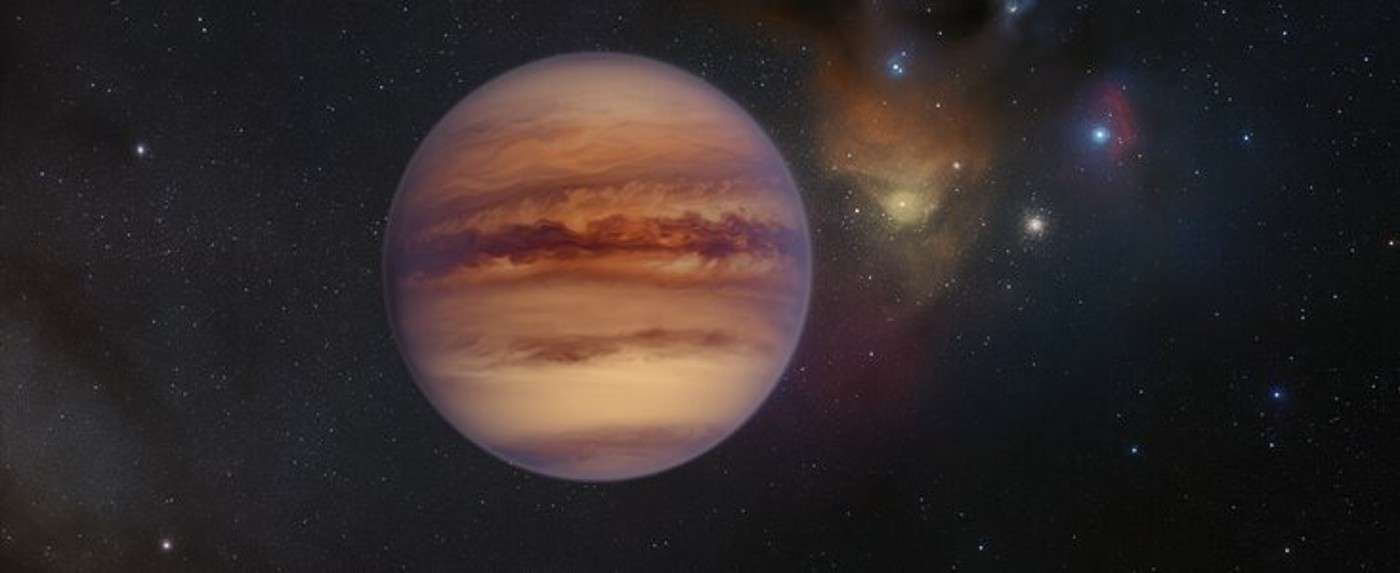Scientists Digitally 'Unwrap' Pharaoh Amenhotep Mummy, While Leaving 3,000 Year-old Artifact Untouched
A new study, published in Frontiers, shows a digitally unwrapped Pharaoh Amenhotep. Take a look at the images from Cairo University here.

Rogue planets are elusive cosmic objects that have masses comparable to those of the planets in our Solar System but do not orbit a star, instead roaming freely on their own.
Not many were known until now, but a team of astronomers, using data from several European Southern Observatory (ESO) telescopes and other facilities, have just discovered at least 70 new rogue planets in our galaxy. This is the largest group of rogue planets ever discovered, an important step towards understanding the origins and features of these mysterious galactic nomads.
"We did not know how many to expect and are excited to have found so many," says Núria Miret-Roig, an astronomer at the Laboratoire d'Astrophysique de Bordeaux, France and the University of Vienna, Austria, and the first author of the new study.
Rogue planets, lurking far away from any star illuminating them, would normally be impossible to image. However, Miret-Roig and her team took advantage of the fact that, in the few million years after their formation, these planets are still hot enough to glow, making them directly detectable by sensitive cameras on large telescopes.
They found at least 70 new rogue planets with masses comparable to Jupiter's in a star-forming region close to our Sun, in the Upper Scorpius and Ophiuchus constellations.
To spot so many rogue planets, the team used data spanning about 20 years from a number of telescopes on the ground and in space. "We measured the tiny motions, the colours and luminosities of tens of millions of sources in a large area of the sky," explains Miret-Roig. "These measurements allowed us to securely identify the faintest objects in this region, the rogue planets."
The team used observations from ESO's Very Large Telescope (VLT), the Visible and Infrared Survey Telescope for Astronomy (VISTA), the VLT Survey Telescope (VST) and the MPG/ESO 2.2-metre telescope located in Chile, along with other facilities. "The vast majority of our data come from ESO observatories, which were absolutely critical for this study. Their wide field of view and unique sensitivity were keys to our success," explains Hervé Bouy, an astronomer at the Laboratoire d'Astrophysique de Bordeaux, France, and project leader of the new research. "We used tens of thousands of wide-field images from ESO facilities, corresponding to hundreds of hours of observations, and literally tens of terabytes of data."
The team also used data from the European Space Agency's Gaia satellite, marking a huge success for the collaboration of ground- and space-based telescopes in the exploration and understanding of our Universe.
The study, published in Nature Astronomy, suggests there could be many more of these elusive, starless planets that we have yet to discover. "There could be several billions of these free-floating giant planets roaming freely in the Milky Way without a host star," Bouy explains.
By studying the newly found rogue planets, astronomers may find clues to how these mysterious objects form. Some scientists believe rogue planets can form from the collapse of a gas cloud that is too small to lead to the formation of a star, or that they could have been kicked out from their parent system. But which mechanism is more likely remains unknown.
Further advances in technology will be key to unlocking the mystery of these nomadic planets. The team hopes to continue to study them in greater detail with ESO's forthcoming Extremely Large Telescope (ELT), currently under construction in the Chilean Atacama Desert and due to start observations later this decade. "These objects are extremely faint and little can be done to study them with current facilities," says Bouy. "The ELT will be absolutely crucial to gathering more information about most of the rogue planets we have found."
Source: ESO
SHARE This Discovery From Outer Space With Far Out Friends…
Be the first to comment